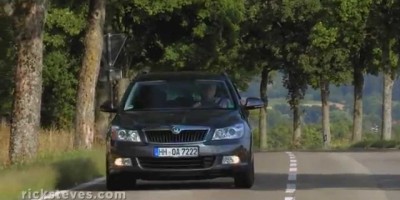European Travel Skills: Driving in Europe

European Travel Skills: Driving in Europe
Driving in Europe isn’t all that different from driving at home, but the first day or two can be an adjustment. Drive defensively, observe, fit in, avoid big-city driving when you can, and wear your seat belt.
Know the laws:
Lights: Many European countries require you to have your headlights on anytime the car is running, even in broad daylight.
Phones: Nearly all countries forbid talking on a cell phone without a hands-free headset.
No right on red: It’s also illegal to turn right on a red light, unless a sign or signal specifically authorizes it (most common in Germany).
Kids: Most countries require safety seats for children under age three, but a few — including Ireland and Germany — require booster seats for older kids. In nearly all countries, children under 12 aren’t allowed to ride in the front seat without a booster seat; a few ban kids from the front seat no matter what, and some have these front-seat rules for teens up to age 18.
Safety kit: Many countries require each car to carry a reflective safety vest or kit with a reflecting triangle (typically supplied by the rental company).
Breathalyzers: In France, all cars need to have an unused Breathalyzer on board (supplied if your rental starts in France, but ask about this if you’re picking up the car elsewhere).
Low-emissions zones: In many cities, cars must meet a certain emission standard in order to enter.Your car-rental company should be aware of these rules — just ask. Or you can research them on the US State Department’s travel website (search for your country in the “Learn about your destination” box, then click “Travel and Transportation”).
JOIN US ON THE NEXT PAGE FOR THE VIDEO


 March 4, 2015
March 4, 2015 







Comments are closed.